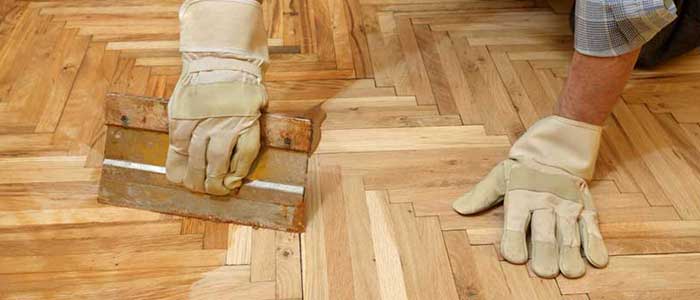Wood is a natural product and that means that almost everything made out of wood is a subject of the natural processes that affect the genuine condition and look of wood. This includes even wooden floors that are normally known for being very sturdy and resistant to inner and outer affection and impact. Well, floors come strong and solid because of the way they are made and finished to last decades, however, as a natural wooden product even wooden floors are subservient to wood’s “mortal” enemies like moisture, humidity, aggressive environment, high traffic, excessive sun exposure and so on.
With that being said, having a wooden floor installed at home, or at your workplace, you have to be prepared for some changes in its initial structure and look. Well, changes will appear with time and not all of them are dangerous and harmful for the floor and while some people may enjoy the aged look, faded or darker colours and all the little transformations that give the floor its unique character, many people won’t enjoy the look that is not flawless as it used to be years ago.
One of those types of changes noticed is gaps. While some gaps are a sign of growing issues and don’t have to be neglected, taking from the stability of the floor and making it noisy, most of the gaps won’t put your floor at risk, however, you want them gone as soon as possible. As you can see, wood floor gaps can be dicey and the best thing you can do is ask for the competent advice of professionals. Especially for engineered wood floors, because gaps are very untypical with engineered wood and you may need some extra help.
Now here are the three best methods for wood floor gap filling:
Dust and resin
This is the perfect method if you are also considering a floor sanding service. Sanding will not only even out the whole surface and the areas, where the gaps are filled, but also the dust accumulated after sanding can be mixed with resin and the texture is used for filling the smaller gaps. The best thing is that since it is wood dust from your own floor, the colour will match perfectly!
Fillet strips
This method is recommended for bigger and wider gaps. Fillet strips are covered with PVA and then knocked into place to fill the existing gap. Local sanding and refinishing are then recommended for an even and sleek look of the surface. This method is very suitable for old oak or pine floorboards.
Colour match acrylic
Using a colour-match acrylic is the easiest way to fill wood floor gaps. The product is not only easy to apply and work with, but also it won’t leave any mess, because the excess acrylic is easy to wipe off. In addition, you don’t have to have your floor sanded and refinished afterwards. However, finding an acrylic colour to match the colour of your floor is not that easy at all.

Be the first to comment on this post.